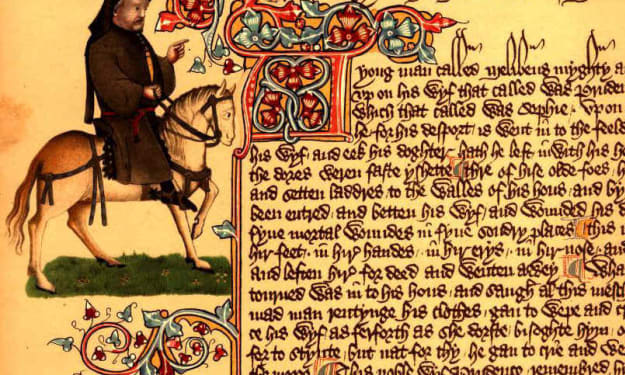The Persistence of Memory, by Salvador Dali
One of the best-known pieces of Surrealist art

Salvador Dali (1904-89) was the leading Surrealist painter and sculptor of the 20th century, as well known for his flamboyant personality and turned-up-at-the-ends moustache as his works of art.
Dali did not start out as a Surrealist, but became influenced by artists such as René Magritte and the film-maker Jean Buñuel. He was admitted to the Paris-based Surrealist group in 1929, but was expelled in 1937 after a falling-out with other members over political differences and a perceived frivolity on Dali’s part towards figures such as Adolf Hitler. He spent the war years in the United States and had broken away from Surrealism by the time of his return to Europe in 1948.
Dali’s surrealism was based on dreams and hallucinations, which he suffered as a child and which, in later life, he caused to happen by standing on his head. It incorporates the Freudian concept of the dream’s apparent reality serving to conceal the dreamer’s real desires, which are often sexual.
Dali developed what he called the “paranoiac-critical” method which interprets the world according to an obsessional idea. The same object can be seen in many different ways, with a single shape being interpreted as various manifestations of the unconscious.
The Persistence of Memory
The Persistence of Memory (1931) was one of Dali’s first major Surrealist works, and is justly famed for the first appearance of Dali’s characteristic “soft watches”. There are three of them here, one being draped over the branch of a dead tree, one over the edge of a wooden box or platform, and the third over a strange object that looks like part of a distorted human head.
The scene is a deserted landscape that might well be based on the coast of Catalonia where Dali grew up. The sea and cliffs form the background.
Another recurring Dali image is the swarm of ants, and there is one here on the back of a fourth watch that is undistorted and lies face down on the platform to the left of the canvas. Ants were symbolic of death and decay to Dali, based on a childhood experience of seeing a dead bat being consumed by ants. Perhaps the implication here is that time itself is subject to decay, just like everything else, and the ants, having destroyed three of the watches, are about to get started on the fourth.
All sorts of interpretations have been offered as to what Dali meant by his soft watches. One thought is that Dali was offering a pictorial representation of Einstein’s Theory of Relativity, such that even time is not fixed. Another is that time when one dreams follows the contours of the dream and is not related to reality. As the objects in the painting are dream images, they exist only in dream time. On the other hand, Dali said that he got the idea from watching a piece of Camembert cheese melting in the sun.
The image at the centre of the canvas, draped over rocks, has also given rise to speculation as to what Dali meant it to be. It has been described as foetus-like, or fish-like, and it certainly appears to have eyelashes and a nose. Dali used a very similar image in an earlier painting, “The Great Masturbator” (1929), which had a strong sexual theme, and the memory of that painting’s meaning may be one of the things that have persisted in the later one. There is also a memory of a rock formation on the coast near Dali’s boyhood home.
However, in another sense it does not matter what the object is, because any one person’s interpretation of an artist’s dream is as valid as anyone else’s. This dream is remembered from a possibly distant past (hence the title), and dreams rarely make much sense when recalled, even if one can remember them with any clarity. The images in this painting must stand as they are, to be interpreted as the viewer wishes.
An interesting feature that is overlooked by anyone seeing “The Persistence of Memory” in a book or on a screen is the painting’s size. It only measures 33 by 24 centimetres (13 by 9 inches), which is not much larger than a sheet of A4 paper. The details on the painting, down to spots of light on the backs of ants, were therefore made with a very steady hand using the finest of brushes. One has to admire Dali’s skill in being so precise.
Dali returned to this painting in a later work, “The Disintegration of the Persistence of Memory”, dated 1952-4, in which the original landscape has been flooded and the various objects have been transformed or broken up. By this time Dali was putting Surrealism behind him and was more interested in nuclear physics (occasioned by the atomic bomb explosions at Hiroshima and Nagasaki) and the realisation of the atomic construction of matter.
“The Persistence of Memory” continues to be one of Dali’s most popular works, whatever interpretation the viewer wishes to make of it. The original is on view at the Museum of Modern Art, New York.
© John Welford
Sources:
Oxford Art Online
VAIZEY, M. 100 Famous Paintings. Artus, 1979
About the Creator
John Welford
I am a retired librarian, having spent most of my career in academic and industrial libraries.
I write on a number of subjects and also write stories as a member of the "Hinckley Scribblers".






Comments
There are no comments for this story
Be the first to respond and start the conversation.